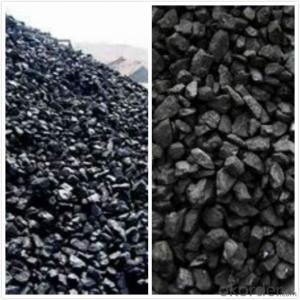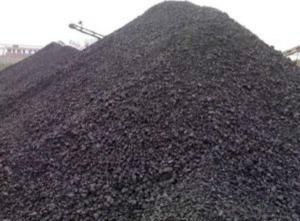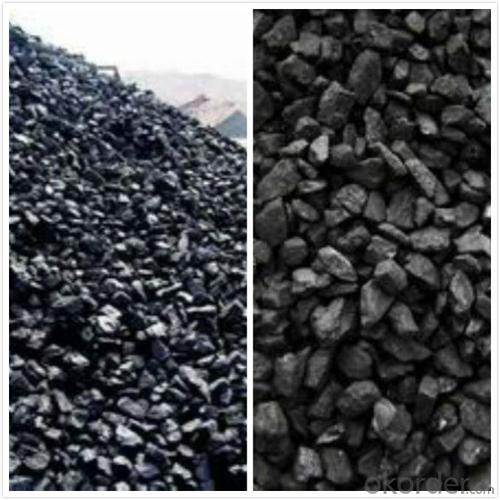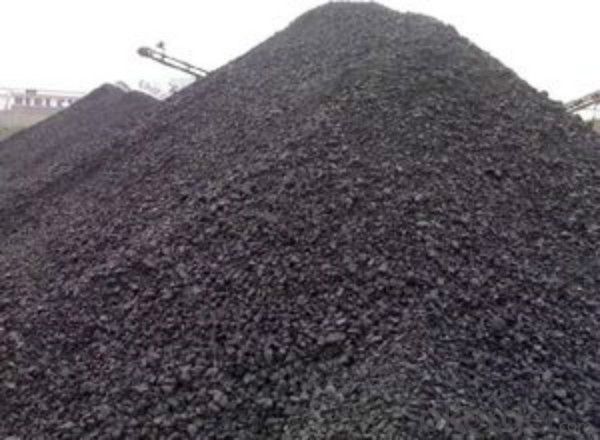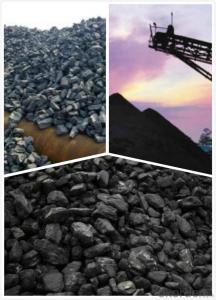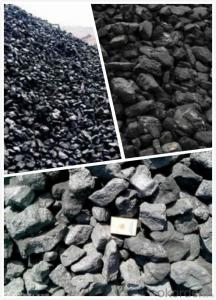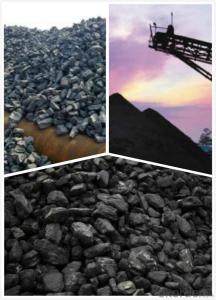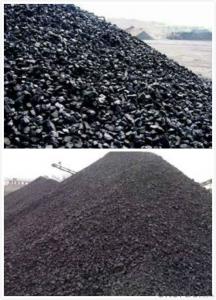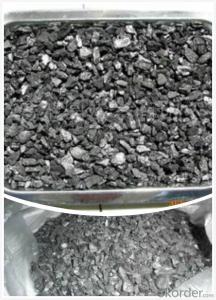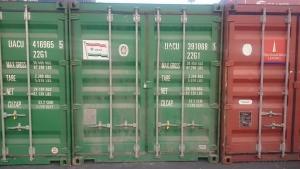Foundry Coke of China Supplier for Furnace Charge
- Loading Port:
- Qingdao
- Payment Terms:
- TT OR LC
- Min Order Qty:
- 2000 m.t
- Supply Capability:
- 10000 m.t/month
OKorder Service Pledge
OKorder Financial Service
You Might Also Like
Product Description
Foundry Coke is a kind of main raw materials used for steel making.
The coke handled by our couporation is made from superior coking coal of Shanxi province. Provided with the dvantages of low ash, low sulphur and high carbon.Our coke is well sold in European,American,Japanese and South-east Asian markets. Our owned Coke plant are located in Shanxi Province and supplying of you many kinds of coke.
Features
This is a special coke that is used in furnaces to produce cast and ductile iron products. It is a source of heat and also helps maintain the required carbon content of the metal product. Foundry coke production requires lower temperatures and longer times than blast furnace coke.
Specification
Fixed Carbon | Sulphur Content | Moisture | V.Matter | Ash |
86%min | 0.7%max | 5%max | 1.2%max | 12%max |
88%min | 0.65%max | 5%max | 1.5%max | 10%max |
85%min | 0.8%max | 15%max | 2%max | 13.5%max |
Size: 60-90mm,90-120mm,120-150mm,150-180mm and so on.
Pictures
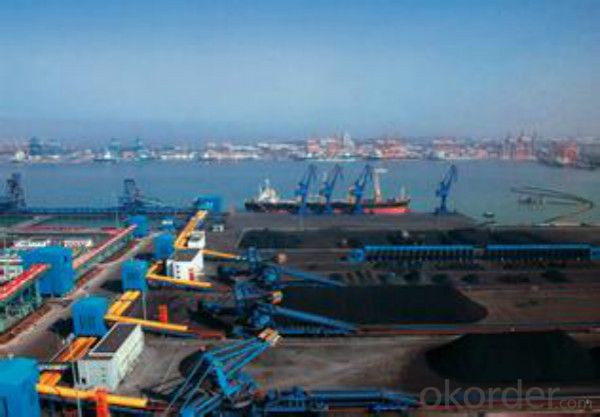
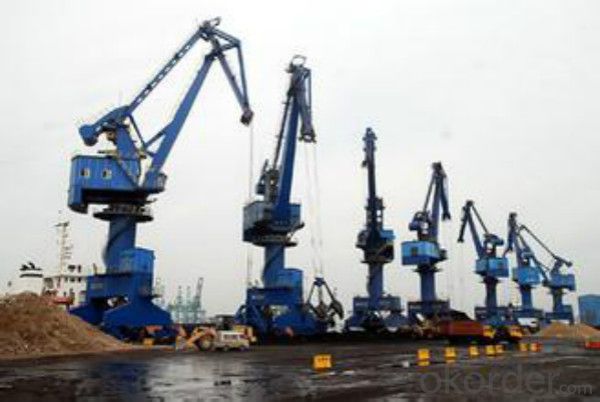
FAQ:
1 How long can we deliver the cargo?
Within 30 days after receiving the LC draft or down payment
2 Time for after-sales?
1 year.
- Q: What are the environmental impacts of carbon emissions?
- Carbon emissions have a wide range of significant environmental consequences. One of the most urgent issues is their contribution to climate change. Carbon dioxide (CO2) is a greenhouse gas that traps heat in the Earth's atmosphere, causing global temperatures to rise. This temperature increase has extensive effects, including the melting of polar ice caps, rising sea levels, and more frequent and severe extreme weather events like hurricanes, droughts, and floods. Another environmental consequence of carbon emissions is ocean acidification. When CO2 is released into the atmosphere, a portion of it dissolves into the oceans and forms carbonic acid. This acidification disrupts the ocean's pH balance, which is crucial for the survival of marine life. It has a negative impact on the growth and development of coral reefs, shellfish, and other organisms that rely on calcium carbonate to create their shells or skeletons. Moreover, carbon emissions contribute to air pollution. The burning of fossil fuels not only releases CO2 but also other pollutants like nitrogen oxides (NOx), sulfur oxides (SOx), and particulate matter. These pollutants have harmful effects on air quality, leading to respiratory problems, cardiovascular diseases, and other health issues for humans and animals. Additionally, they contribute to the formation of smog and haze, reducing visibility and further deteriorating air quality. Carbon emissions also indirectly affect ecosystems. Changes in climate patterns can disrupt ecosystems and impact the distribution and behavior of various species. This can result in alterations in bird migration patterns, the timing of plant flowering, and the availability of food sources. These disruptions can have cascading effects on entire ecosystems, potentially leading to the extinction of certain species or the invasion of non-native species. Finally, carbon emissions contribute to the depletion of natural resources. Extracting and burning fossil fuels for energy production not only release carbon dioxide but also necessitate the destruction of habitats and ecosystems. This includes activities like coal mining, oil drilling, and deforestation for palm oil plantations or grazing lands. These actions result in the loss of biodiversity, habitat destruction, and soil erosion, further aggravating environmental degradation. In conclusion, the environmental impacts of carbon emissions are varied and extensive. They encompass climate change, ocean acidification, air pollution, disruption of ecosystems, and the depletion of natural resources. Addressing these impacts requires a collective effort to reduce carbon emissions and transition towards cleaner and more sustainable energy sources.
- Q: Yes, I have a weapon, want to strengthen 11, said to be advanced furnace rock carbon, do not know how to get, look at the prawns pointing
- Is there still any carbon in the furnace?After the revision, there is no, where did not sell, the furnace rock carbon has turned into colorless small crystals
- Q: How to identify a laptop shell is carbon fiber
- Carbon fiber, as its name suggests, is made from carbon fiber, so there are several characteristics. First, if it is not colored, you can see the obvious fiber. Second is black carbon color. And it's a lot more than ABS.
- Q: How does carbon impact air quality?
- Carbon can have a significant impact on air quality through the release of carbon dioxide (CO2) and other carbon-based pollutants into the atmosphere. The burning of fossil fuels, such as coal, oil, and natural gas, releases large amounts of carbon dioxide, which is a greenhouse gas responsible for climate change. Increased levels of carbon dioxide in the atmosphere contribute to the warming of the Earth's surface, leading to adverse effects on air quality. Furthermore, carbon-based pollutants, including carbon monoxide (CO) and volatile organic compounds (VOCs), can be emitted during the incomplete combustion of fossil fuels or other organic materials. These pollutants have harmful effects on human health and can contribute to the formation of ground-level ozone, a major component of smog. Ozone can cause respiratory problems, lung damage, and worsen existing respiratory conditions such as asthma. Additionally, carbon particles, known as black carbon or soot, are released from the burning of fossil fuels, biomass, and other organic matter. These particles can directly impact air quality by absorbing sunlight and reducing visibility. Moreover, when these particles are inhaled, they can penetrate deep into the lungs, causing respiratory issues and potentially leading to long-term health problems. Reducing carbon emissions is crucial for improving air quality and mitigating the negative impacts on human health and the environment. Transitioning to cleaner and more sustainable energy sources, such as renewable energy, can help reduce carbon emissions and improve air quality. Implementing stricter regulations and emission standards for industries and vehicles can also contribute to reducing carbon pollution and improving overall air quality.
- Q: What are the consequences of increased carbon emissions on social inequality?
- Social inequality is profoundly affected by the increase in carbon emissions. The main consequence is the worsening of existing inequalities, especially in disadvantaged communities. Firstly, marginalized communities, including low-income neighborhoods and developing countries, are disproportionately affected by the effects of climate change caused by carbon emissions. These communities often lack the necessary resources and infrastructure to withstand extreme weather events like hurricanes or flooding, which makes them more vulnerable and leads to loss of livelihoods. Secondly, the economic impact of carbon emissions, such as higher energy costs and reduced agricultural productivity, widens the gap between the rich and the poor. Wealthy individuals can adapt to these changes, while those with limited financial resources struggle to cope, resulting in increased poverty and socio-economic disparities. Furthermore, carbon emissions contribute to health disparities. Low-income neighborhoods, where industrial plants and highways are often located, are disproportionately affected by polluted air caused by carbon emissions. This leads to higher rates of respiratory diseases and other health issues in marginalized communities, exacerbating existing health inequalities. Moreover, the consequences of climate change, driven by carbon emissions, can force communities to relocate, resulting in social disruption and increased competition for resources. This further marginalizes vulnerable populations and creates conflicts over land and resource access. Lastly, the consequences of carbon emissions on social inequality are not limited to specific regions but have global implications. Developing countries, which contribute less to carbon emissions but bear a disproportionate burden of the impacts, face significant challenges in addressing climate change due to limited resources and technological capabilities. This perpetuates global inequalities. In conclusion, the increase in carbon emissions has severe consequences for social inequality. It amplifies existing disparities, particularly affecting marginalized communities, through the disproportionate impacts of climate change, economic hardships, health disparities, forced displacement, and global inequalities. Addressing carbon emissions and climate change is essential not only for environmental sustainability but also for promoting social justice and reducing social inequality.
- Q: I bought a grill myself and went to barbecue with my friends the day after tomorrow, but I can't ignite the carbon. What should I do?
- Just use a cigarette lighterA little bit better, then point the place down, and turn the fire upSoon enough ~!Then put a lot of charcoal on a piece of it ~!Enjoy your camping ~!
- Q: What is carbon neutral agriculture?
- Carbon neutral agriculture refers to farming practices that aim to balance out the amount of carbon dioxide released into the atmosphere with the amount removed or offset. It involves implementing sustainable techniques such as reducing greenhouse gas emissions, promoting carbon sequestration in soils, and utilizing renewable energy sources. The goal is to achieve a net-zero carbon footprint in agricultural activities, contributing to mitigating climate change impacts while ensuring food production and environmental sustainability.
- Q: Why are biological molecules carbon based molecular aggregates?
- Because living things are living organisms, most of them consist of organic compounds, which are carbon compounds, and carbon chains are the main body
- Q: How is carbon used in the production of fertilizers?
- Carbon is an essential component in the production of fertilizers. It is used in various forms such as organic matter, carbon dioxide, and carbonates. These carbon sources are utilized to enhance soil fertility, improve plant growth, and increase crop yield. Organic matter, such as compost, manure, and crop residues, contains carbon in the form of decomposed plant and animal materials. When added to the soil, these organic sources of carbon provide essential nutrients, including nitrogen, phosphorus, and potassium, to plants. They also improve soil structure, water holding capacity, and microbial activity, which are crucial for plant growth. Carbon dioxide (CO2) is another important carbon source used in the production of fertilizers. CO2 is captured from industrial emissions and incorporated into the production process. It is converted into various chemical compounds, such as urea and ammonium bicarbonate, which are widely used as nitrogen fertilizers. These fertilizers release nitrogen slowly, ensuring a steady supply of nutrients to the plants over an extended period of time. Additionally, carbonates, such as calcium carbonate, are used as neutralizing agents in fertilizers. They help to balance the pH levels of acidic soils, making them more favorable for plant growth. Carbonates also provide a source of calcium, an essential nutrient for plants, further enhancing their growth and development. In summary, carbon plays a crucial role in the production of fertilizers by providing essential nutrients, improving soil fertility, and enhancing plant growth. Whether in the form of organic matter, carbon dioxide, or carbonates, carbon is a vital component that contributes to the success of modern agriculture.
- Q: What is the importance of carbon dating in archaeology?
- Archaeology heavily relies on carbon dating, which plays a pivotal role in determining the age of artifacts and archaeological sites. This scientific technique is essential for establishing a chronological framework and comprehending the timeline of human history. Carbon dating operates on the principle that all living organisms contain a specific amount of radioactive carbon-14, which undergoes predictable decay over time. By quantifying the remaining carbon-14 in an artifact or organic material, archaeologists can calculate its age. This method is particularly advantageous when dating organic remains like bones, charcoal, and plant fibers, which are frequently unearthed at archaeological sites. The significance of carbon dating lies in its ability to deliver precise and trustworthy estimations of an artifact's age. This information is critical for interpreting and comprehending the context and importance of archaeological discoveries. By assigning an accurate date to an object or site, archaeologists can establish connections between different artifacts, societies, and cultures. This, in turn, aids in reconstructing ancient civilizations and their evolution throughout time. Moreover, carbon dating also contributes to refining and validating historical timelines. It enables archaeologists to cross-reference and authenticate the dating of artifacts and sites by employing alternative dating methods, such as dendrochronology (tree-ring dating) or stratigraphy (the study of rock layers). Employing multiple dating techniques enhances the accuracy and reliability of archaeological interpretations. Carbon dating also assists in identifying and distinguishing genuine artifacts from forgeries. By analyzing the age of an object, archaeologists can determine if it aligns with the claimed historical context. This is especially pertinent in the realm of art and antiquities, where the market for counterfeits can be lucrative. In conclusion, carbon dating is an indispensable tool in archaeology, enabling researchers to establish the chronology of ancient civilizations, validate historical timelines, and identify authentic artifacts. It provides invaluable insights into our past, facilitating a deeper understanding and appreciation of the diverse tapestry of human history.
Send your message to us
Foundry Coke of China Supplier for Furnace Charge
- Loading Port:
- Qingdao
- Payment Terms:
- TT OR LC
- Min Order Qty:
- 2000 m.t
- Supply Capability:
- 10000 m.t/month
OKorder Service Pledge
OKorder Financial Service
Similar products
Hot products
Hot Searches
